The tragic story of Katherine Howard, the 5th wife of Henry VIII, whose childhood was stolen and who would later be betrayed by others. Married at the age of 17 to the 50-year-old King, she would be executed just 2 years later. Here is her story and her connections to Kennington.

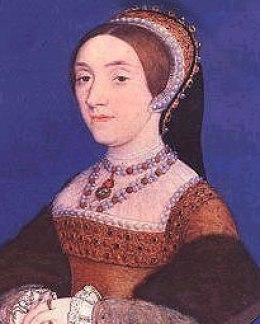
Katherine Howard, Henry VIII’s fifth wife, became Queen in 1540, aged around 17, and was executed in 1542, aged just 19, on charges of treason and adultery.
She was born in Lambeth, and she would come to Henry’s attention when she was living in her step-grandmother’s grand home, Norfolk House In Lambeth. She moved there at the age of 13 after being abused by her music teacher only to be taken advantage of by another older man in her new home.
Norfolk House, Lambeth
Norfolk House was a grand house that used to stand where the Novotel hotel at 113 Lambeth Road is currently located, next to the Bell Building at Norfolk Row, SE11. This is just opposite is Lambeth Palace and the former parish church of St Mary’s (now the Garden Museum).
Today, Old Paradise Gardens is the only surveying part of the Duchess’s gardens and extensive orchards where the young Katherine once would have strolled.
‘Norfolk House and Old Paradise Street’, in Survey of London: Volume 23, Lambeth: South Bank and Vauxhall, ed. Howard Roberts and Walter H Godfrey (London, 1951), pp. 137-140. British History Online http://www.british-history.ac.uk/survey-london/vol23/pp137-140 [accessed 21 May 2021].
St Mary’s Parish Church (now the Garden Museum)

This was the Howard’s family chapel and in it are the tombs of many of Katherine’s powerful relatives. Agnes Tilney, Duchess of Norfolk and Anne Boleyn’s mother, Elizabeth Howard, Countess of Wiltshire, lie under the floor of what is now the cafeteria. (Searching for the Grave of Elizabeth Boleyn, Countess of Wiltshire)
“My lady Wiltshire was buried at Lamehithe on the 7th… She was conveyed from a house beside Baynard’s Castle by barge to Lambeth with torches burning and four baneys (banners?) set out of all quarters of the barge, which was covered with black and a white cross.”
John Husee recording her funeral procession in a letter to Lady Lisle
Old Paradise Street and Gardens(Opens in a new browser tab)
Katherine Howard
Katherine was probably born in Lambeth in about 1523, but the exact date of her birth remains uncertain. She was the youngest of 10 children and she was also a first cousin to Anne Boleyn, Henry’s second wife, and second cousin to his third wife, Jane Seymour.
Soon after the death of her mother (in about 1528), when Catherine was aged about five, she was sent with some of her siblings to live in the care of her father’s stepmother, Agnes Howard, the Dowager Duchess of Norfolk.

Anne Boleyn 
Jane Seymour
The Dowager Duchess presided over large households where dozens of attendants, along with her many wards—usually the children of aristocratic but poor relatives—resided. This was common practice at the time where sending young children to be educated and trained in aristocratic households other than their own was common.
The Dowager Duchess was often at Court and seems to have had little direct involvement in the upbringing of her wards and young female attendants.
As a result of the Dowager Duchess’s lack of discipline, Katherine became influenced by some older girls who candidly allowed men into the sleeping areas at night for entertainment.
Groomed and molested
At 13yrs old Katherine was repeatedly molested by her music teacher, Henry Manox (aged 36). He later gave evidence in the inquiry against her. Mannox and Katherine both confessed during her adultery inquisitions that they had engaged in sexual contact, but not actual intercourse.
“At the flattering and fair persuasions of Mannox, being but a young girl, I suffered him at sundry times to handle and touch the secret parts of my body, which neither became me with honesty to permit nor him to require.”
Catherine Howard when questioned
Her affair with Mannox came to an end in 1538, when Katherine, now aged 15, moved to the Dowager Duchess’s household at Norfolk House, Lambeth. There she was pursued by Francis Dereham, a secretary of the Dowager Duchess. They became lovers, addressing each other as “husband” and “wife”. Many of Katherine’s roommates among the Dowager Duchess’s maids of honour and attendants knew of the relationship, which apparently ended in 1539 when the Dowager Duchess found out.
Despite this, Katherine and Dereham may have parted with intentions to marry upon his return from Ireland, agreeing to a pre-contract of marriage. If indeed they exchanged vows before having sexual intercourse, they would have been considered married in the eyes of the Church.
To Court
In 1540, Katherine’s uncle, the Duke of Norfolk, found her a place at Court, in the household of Henry VIII’s fourth wife, Anne of Cleves. As a young & attractive lady in waiting, Katherine quickly caught Henry’s eye. Her youth and prettiness captivated the middle-aged sovereign and he soon began to shower in gifts of land, expensive jewels and cloth.
A rose without a thorn….the very jewel of womanhood
Henry VIII on Katherine Howard

Thomas Howard, 3rd Duke of Norfolk 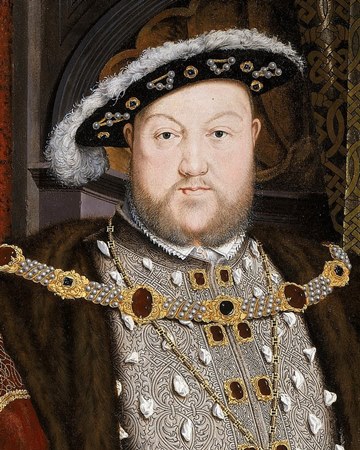
Henry VIII
Marriage to Henry VIII
On July 12th 1540, Henry VIII’s 4th marriage was annulled and just sixteen days later Henry VIII took Catherine Howard as his 5th wife. For a while the two were happy and Katherine was able to lift the King’s spirits. By this time Henry had gained a lot of weight and was dealing with a painful ulcerated leg and the attentions of a young wife brought back some of Henry’s enjoyment for life. He was now 50 years old, she was just 17.
But less than a year into the marriage, the rumours of her infidelity began to circulate.
Katherine had appointed Francis Dareham as her personal secretary. Soon people who had witnessed her earlier indiscretions when she was young began to blackmail her in return for their silence and higher positions at court. The gossip circulated and it was soon discovered Katherine was having an affair with Thomas Culpeper, Henry’s favourite courtiers. The couple’s meetings were arranged by one of Katherine’s older ladies-in-waiting Jane Boleyn, Viscountess Rochford, Anne Boleyn’s brother’s widow.
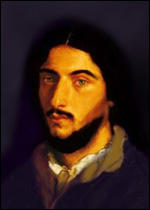
Francis Dareham 
Thomas Culpeper
Thomas Cranmer built a case against Katherine which he brought before the King in November 1541, hoping to prove the Queen’s infidelity. Henry was heartbroken – he did not believe the accusations at first but agreed to an investigation. Lady Rochford was interrogated & for fear of being tortured, agreed to tell all And a love letter written by the Queen was discovered in Culpeper’s chambers. Catherine was immediately put under house arrest. she begged to see Henry but he moved to another location and she never saw him again.

Thomas Cranmer 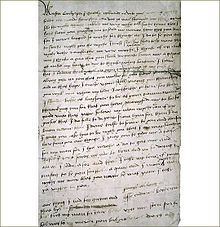
Katherine’s Letter to Culpeper
The Execution
Culpeper & Dareham were both tried for high Treason and were both executed at Tyburn on the 10th Dec 1541, with Culpeper being beheaded and Dareham being hanged, drawn and quartered. Many of Katherine’s relatives were detained in the Tower and tried for treason for encouraging him to marry a woman who had illegally hidden her sexual history and keeping her previous and current affairs a secret from the King. All of the Howard prisoners were tried, found guilty of concealing treason and sentenced to life imprisonment and forfeiture of goods. Though in time, they were released with their goods restored
Katherine herself remained in limbo until Parliament created a new law that could punish those who ‘intended’ to commit treason such as Adultery and Katherine was officially arrested for Treason.
Katherine was charged with leading an ‘abominable, base, carnal, voluptuous, and vicious life, like a common harlot, with diverse persons’.
When the Lords of the Council came for her she panicked and began to scream and she was manhandled into a waiting barge and escorted to the Tower of London. Her flotilla passed under London Bridge where the heads of Culpepper & Dareham were impaled for all to see. Entering through the Traitors’ Gate she was led to her prison cell. Her execution was scheduled for 7:00 am on Monday 13th February 1542. her only request was that the block is brought to her cell so she could practice how to place her head on the block.
The next morning she was helped to the scaffold. She made a speech about her ‘worth & just punishment’ and placed herself on the block and her head was removed with one clean cut.
Her body was then laid in an unmarked grave in the chapel of St Peter ad Vincula at the Tower of London
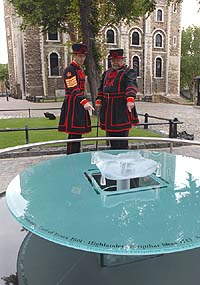
Memorial to Executed at the Tower of London 

The grave mark of Queen Catherine Howard laid to rest in St Peter Ad Vincular
SiX: The Musical
For a modern take on Katherine’s story – here is ‘All You Wanna Do’ from the musical SiX currently at the Lyric Theatre. https://www.sixthemusical.com/london/ticket-info

Kennington’s Royal Palace and Edward the Black Prince(Opens in a new browser tab)





